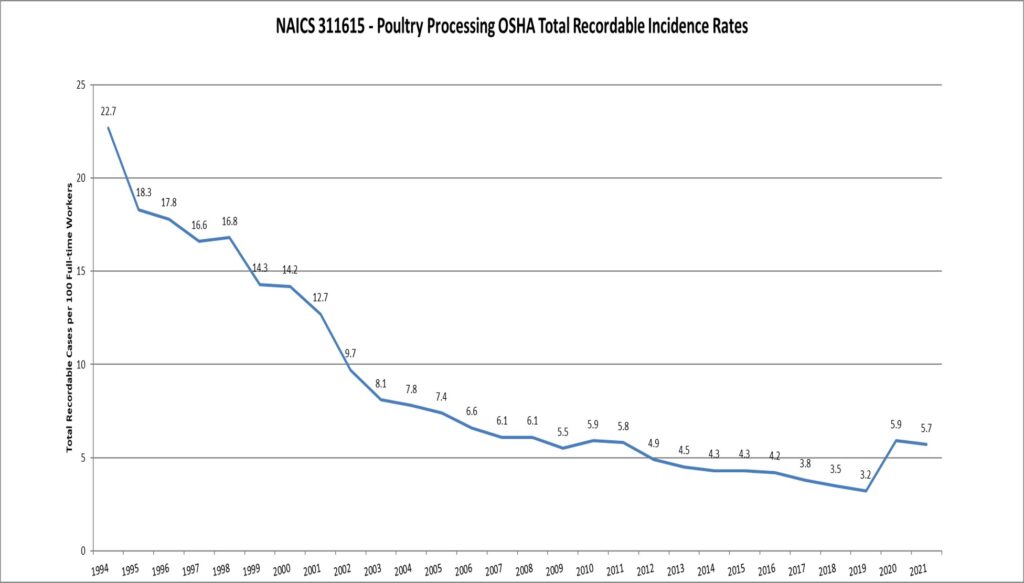Employee safety has been and will always be a priority for the poultry industry.

Chicken processors continue to focus our efforts on the prevention of workplace injuries by acknowledging the benefit of implementing ergonomics and medical intervention principles, while continually implementing new technology and automation in the workplace.
These efforts are netting tangible results that demonstrate the vast advancements the industry has made in improving employee safety.
The incidence of occupational injuries and illnesses within the poultry sector’s slaughter and processing workforce has fallen 75 percent over the last 30 years according to the most recent Injury and Illness Report released by the U.S. Department of Labor.

The total recordable poultry processing illness and injury rate for 2022 (the latest data available) was 5.7 cases per 100 full-time workers (per year), down from 22.7 in 1994 when the Department of Labor began tracking the rate. The poultry industry’s rate of 5.7 was below the rate of 6.5 for similar agricultural industries in terms of injuries per 100 full-time workers.
Continued Improvement
While the past 30 years have seen a dramatic decrease in the numbers and rates injury and illnesses occurring in the industry, the poultry industry will continue to seek new and innovative ways to protect our workforce. Ongoing efforts to improve the poultry industry’s record in worker safety include:
- In late 2019, the poultry industry partnered with the U.S. Department of Labor’s Occupational Safety & Health Administration (OSHA) to form an official alliance to share information, guidance and access to training resources that will help further improve the significant gains made in poultry worker safety over the past 25 years. The shared goals for the alliance include raising awareness of health and safety practices and programs through outreach and communication in addition to training and education; Sharing non-competitive practices;
- Partnering with the Georgia Tech Research Institute to develop an instrument to assess musculoskeletal disorder (MSD) risks in poultry tasks. The tool measures upper extremity stresses associated with poultry deboning and cutting tasks, and provide quantitative data to help in workstation and tool redesign and process workflow improvements to reduce the stresses and strains associated with repetitive work;
- Continuing to work with equipment manufacturers and suppliers to improve machine guarding on new equipment and the provision of adequate disconnects to assist and facilitate proper lock out/tag out (LOTO) procedures;
- Collaborating with personal protective equipment suppliers. This has led to improvements in cut resistance of protective handwear, reduced fogging issues with safety eyewear, and improved slip resistance in safety footwear to address lacerations, foreign objects/splashes and slip, trips and falls;
- Conducting monthly meetings of the Poultry Industry Safety & Health Committee to share best practices in hazard identification and risk control;
- Maintaining a Poultry Industry Safety Recognition Awards program that honors poultry processing plants that have injury and illness rates below the industry average for three consecutive years. Through the implementation of innovative and effective programs, this year more than 230 plants were recognized; and
- Holding an annual safety conference for the past 40 years – the National Safety Conference for the Poultry Industry.



